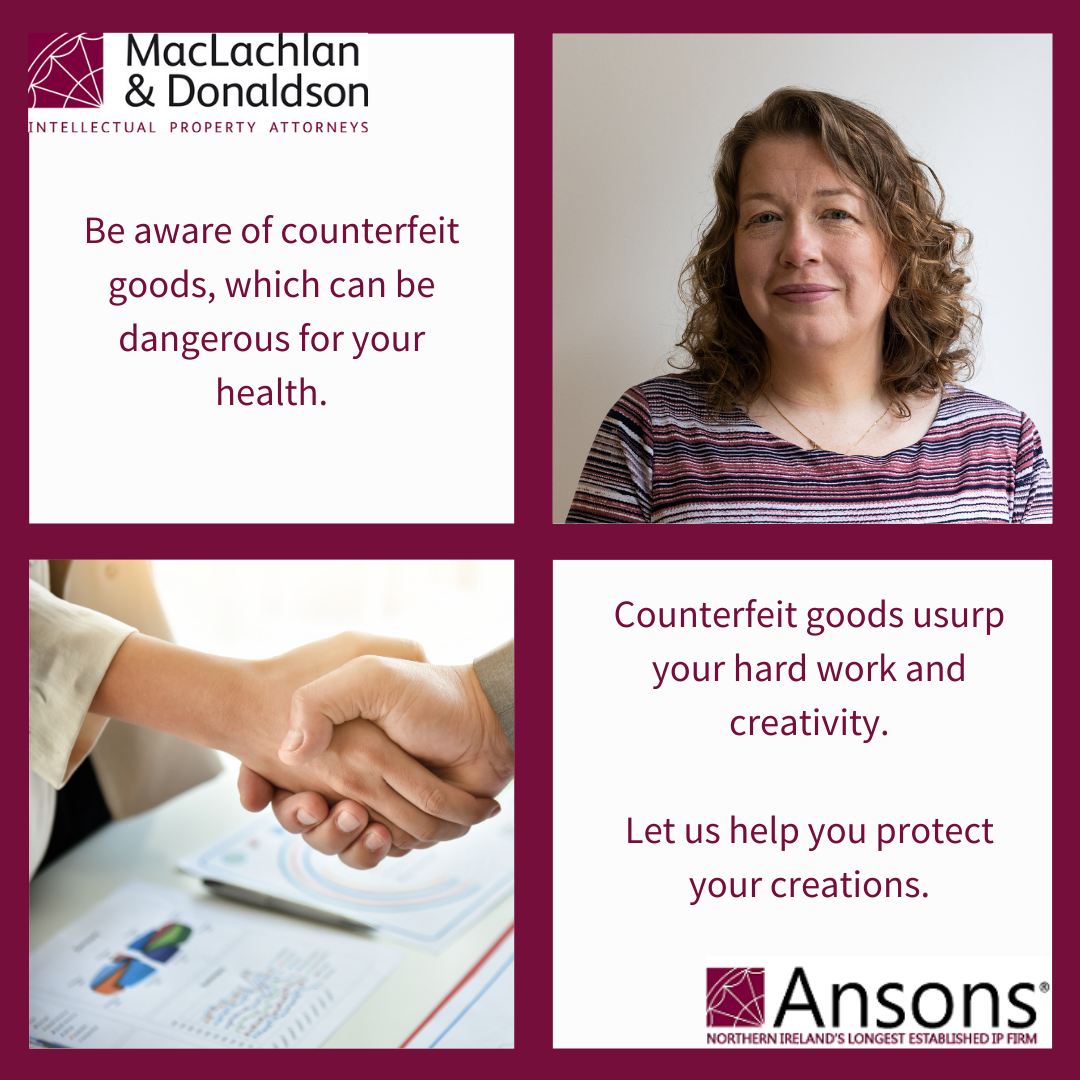Many years ago, while looking for a Christmas gift for my husband, I came across an offer on the Internet for a set of DVDs containing one of his favourite comedy shows. I placed the order and, as Christmas drew near, I eagerly anticipated the reaction this gift would get. Finally, the gift arrived but when I happily opened it my stomach dropped and a lump appeared in my throat. Why such a reaction? It was because the DVD set wasn’t genuine. The seller had essentially taped the show from the TV, adverts and all, and put them together in a shoddy cover. Back to the drawing board for a gift for my husband, out of pocket and feeling foolish at having been tricked.
I am not the only person to have such an experience. Fake and counterfeit products are continuously placed on the market and purchasers either fall for their apparent genuineness or purposefully purchase them because they are cheaper than the genuine article.
Where is the harm?
Consumers may ask “surely, buying counterfeit goods is a “victimless” crime?” “Aren’t those companies making plenty of money anyway?”
Yet, every year leading up to Christmas we hear reports of counterfeit goods, ranging from everyday items such as washing powder and alcoholic beverages to video games, designer wear, luxury items, and cigarettes, being seized. While nightmare stories of people who have been adversely affected due to the purchase of such goods make newspaper headlines.
The Consumer
Since counterfeit products are not inspected, they don’t adhere to safety standards and don’t offer warranties therefore can be sold at cut prices. However, a report by the charity Electrical Safety First found that 98% of all counterfeit and lookalike iPhone charges failed basic safety checks. Counterfeit alcoholic beverages often contain ingredients that are dangerous for human consumption, in and of themselves, or are present at such levels that serious illness or even death could be caused.
The European Union Intellectual Property Office (EUIPO) in their 2022 report on the trade in counterfeit goods, cited a particular instance of counterfeit cosmetics being seized in the United Kingdom. The detrimental effects of the use of these goods included the risk of “…chemical burns and skin rashes. Moreover, exposure to the mercury in the cosmetics could have toxic effects on the nervous system, digestive and immune systems, lungs, kidneys, skin and eyes…”.(OECD/EUIPO (2022), Dangerous Fakes: Trade in Counterfeit Goods that Pose Health, Safety and Environmental Risks, Illicit Trade, OECD Publishing, Paris, https://doi.org/10.1787/117e352b-en). Other cosmetics and perfumes seized contained bacteria and animal fecal matter; not anything I’d want to apply to my face.
The Manufacturer
Then there are those of you who have invested time and resources into creating products that appeal to consumers. Counterfeiters take advantage of the innovation and hard work that has been put into the creation of products and services. They seek to usurp the reward for that hard work and creativity by diverting sales and damaging both the reputation and uniqueness of those who have taken the time to design and develop a product and bring it to market.
The aforementioned EUIPO report states that “Trade in counterfeit goods is a major risk for today’s modern, productive and forward-looking global economy. It not only strikes at the heart of the engine of sustainable economic growth, but also poses significant risks to health, safety and the environment.”
What can you do to protect yourself from being a victim?
As a consumer, the organisation, FACT, has produced a helpful guide and we encourage you to check this out at Risks of counterfeit goods and how to stay safe | FACT (fact-uk.org.uk). You can also find more information at the European Consumer Centre Ireland.
As a producer or manufacturer, many products contain Intellectual Property Rights (IPRs), such as trade marks, designs, patents, and copyright. These are tools that can be used to protect your uniqueness, reputation, and sales. While some IPRs, such as copyright and unregistered design rights, automatically come into being upon the creation of a product, it is also possible to protect other IPRs through registration. For example, those signs which identity your brand can be protected by obtaining a trade mark registration, the appearance of a product through obtaining a design registration, and the way a product works by obtaining a patent.
Let us assist you in obtaining the correct tools to protect your products from counterfeiters and safeguard your reputation and future growth.
Cherrie Stewart – Chartered Trade Mark Attorney


